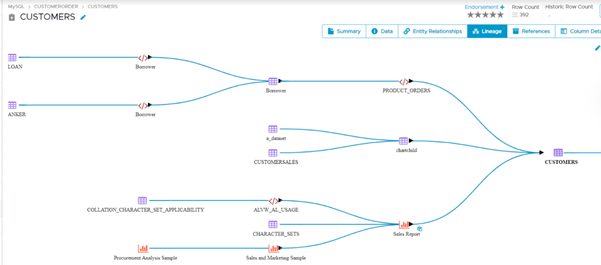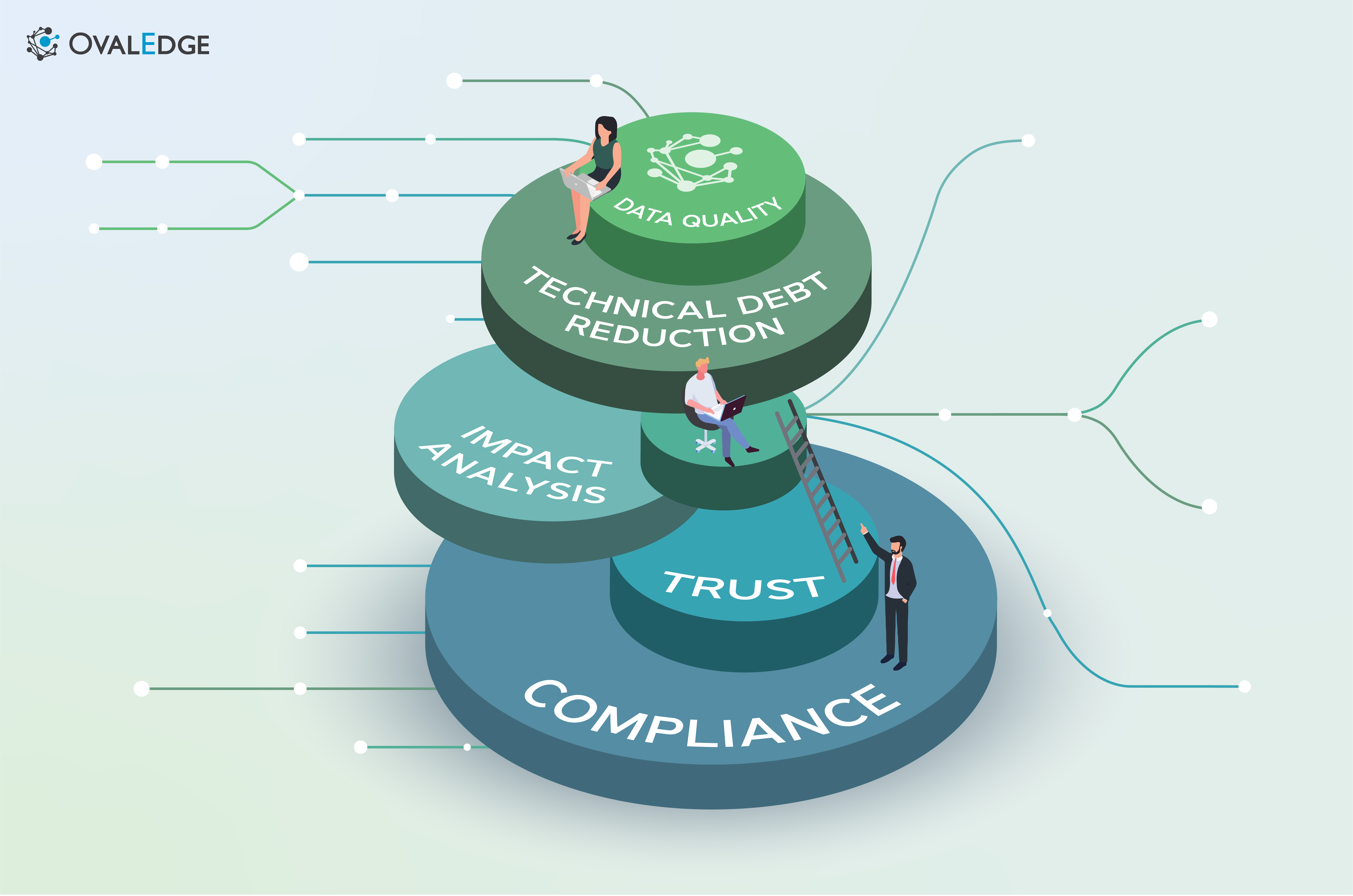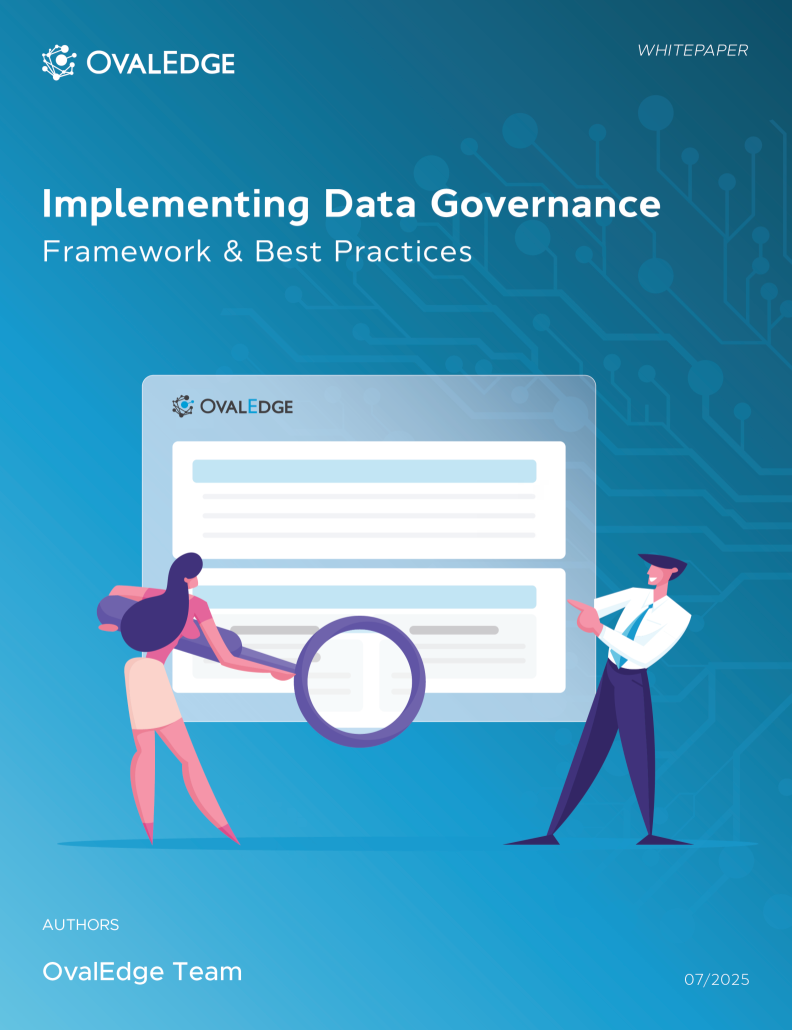Table of Contents
5 Core Benefits of Data Lineage
One thing all data-driven organizations are aware of is the fluidity of data. Far from being a static resource, data is constantly moved from one place to another, transforming at every step of its journey. Yet, this malleable resource is critical for making informed business decisions.
That's why data lineage is so important. It enables organizations to understand how data travels from one place to another within a cloud-based or on-prem infrastructure, tracking its course through databases, data lakes, ETLs, data warehouses, and reporting systems.
This blog will explain the core benefits of data lineage, providing context to understand why committing to accurate lineage building in your organization is so important.
Are you ready to alleviate the chaos of your data load by applying tried and tested lineage building and maintenance techniques? Download our Whitepaper How to Build Data Lineage to Improve Quality and Enhance Trust
Why is Data Lineage Important for Business?
The modern data ecosystem is a minefield, a complex web of systems and processes that users can only navigate successfully with a dedicated governance tool. If your ecosystem lacks data lineage, the fallout can be significant.
Lack of trust in data products: Users are becoming increasingly disillusioned with data products because, without accurate lineage, there is no proof that they are what they claim to be.
Never-ending data quality issues: When you can't trace the origin and flow of data, you can't improve its quality. As a result, an absence of lineage leads to ongoing data quality issues.
Regulatory compliance: Data privacy compliance is just one of the many regulatory compliance statutes that impact businesses in every sector. Auditors need proof of data lineage to ensure users handle data correctly.
Related: Data Privacy Compliance - How to Ensure it and How it Can Benefit Your Business
Core Benefits of Data Lineage
Data lineage has five significant benefits to an organization's digital health and success. Here they are in order of importance.
Compliance
The core benefit of data lineage is compliance on two levels. Firstly, data lineage supports regulatory reporting specific to the sector and use case. For example, data lineage is critical when reporting balance sheets to the IRS or another equivalent tax authority.
Data lineage is vital for complying with data privacy regulations at the second level. Only with complete data lineage can your compliance team confirm that PII data is secure and hasn't been exposed to a breach at any point in its lifetime.
Trust
There is a global push in the business community for data-driven business processes. However, when users don't trust the data they have to work with, they are less inclined to do so, holding back your organization's digital transformation efforts.
Data lineage displays every movement and transformative point data has endured, from conception to the time of access. This record instills trust and empowers users to reject or report specific data that isn't up to scratch.
Impact analysis
Data lineage enables organizations to identify any data assets impacted by modifications quickly. Speed is essential in impact analysis to prevent adverse outcomes downstream. With data lineage in place, it's possible to mitigate any inadvertent disruption to data assets.
Technical debt reduction
Installing a data governance platform is a powerful way of reducing technical debt because it enables organizations to streamline data storage, consolidation, access, and more. Data lineage contributes to this overall goal as a crucial part of any data governance program.
Data Quality
Data quality improves through a process called the data quality improvement lifecycle. One element of this is root cause analysis. As the name suggests, examining the root cause of data quality issues involves going back to the source and analyzing what has gone wrong and why. Data lineage enables this analysis.
How to track, build, and maintain Data Lineage with OvalEdge
There are three core ways of tracking data lineage: at the system level, at the object level, and at the column level. In OvalEdge, each approach is incorporated to enable a holistic and comprehensive approach to tracking the lineage of the data in your organization.

In terms of building lineage, OvalEdge automates the process by parsing the source code of various supported systems such as reporting systems, ETLs, data warehouses, and SQLs. After reverse engineering, lineage is built automatically. You can access OvalEdge data lineage via backend algorithms to automate various processes.
Many specific applications include lineage tracking facilities, but when users want to move data out of the application, they encounter difficulties. This is where OvalEdge’s automated lineage-building facilities are critical.
OvalEdge supports lineage building across ETLs like SSIS, SAP BODS, Alteryx, Talend, and Informatica. Via warehouses including Snowflake, Databricks (Spark SQL), SQL Server, Teradata, Oracle, Redshift, Vertica, and more. And reporting systems like Tableau, Power BI, Qlik, Business Objects, and Sisense.
Conclusion
When it comes to data governance, organizations can't ignore certain aspects, and data lineage is one of those aspects. Regardless of the industry or sector you operate in, data lineage is an essential part of the governance process.
With so much data to govern, lineage tracking and building can be challenging and time-consuming. OvalEdge simplifies the process while enabling you to build lineage across your data landscape.
Contact us today to arrange a demo.
FAQs
- What is data lineage and why is it important?
Data lineage is the process of tracking data’s movement, transformation, and usage across systems. It provides transparency into where data comes from and how it changes, helping organizations ensure data quality, compliance, and trust. - How does data lineage improve data quality?
By mapping data’s flow and transformations, lineage enables root cause analysis for data issues. It helps teams trace errors to their origin, ensuring consistent, accurate, and high-quality data across systems. - How does data lineage support compliance and auditing?
Data lineage provides a clear trail of how sensitive data (like PII) is used, transformed, and stored. This transparency is essential for meeting regulatory requirements such as GDPR, HIPAA, and SOX, and for providing proof during audits. - What are the main benefits of implementing data lineage?
The five main benefits are improved compliance, enhanced trust in data, faster impact analysis, reduced technical debt, and better data quality. Together, these benefits strengthen overall data governance and decision-making. - How does data lineage help in impact analysis?
Data lineage quickly identifies which datasets or systems are affected by a change. This helps prevent downstream errors, speeds up troubleshooting, and minimizes business disruption during system updates or migrations. - How does OvalEdge help organizations build data lineage?
OvalEdge automates data lineage by parsing source code from databases, ETLs, and BI tools. It supports systems like Snowflake, Power BI, Tableau, and Informatica, helping enterprises visualize, manage, and maintain lineage efficiently.
What you should do now
|
OvalEdge recognized as a leader in data governance solutions
.png?width=1081&height=173&name=Forrester%201%20(1).png)
“Reference customers have repeatedly mentioned the great customer service they receive along with the support for their custom requirements, facilitating time to value. OvalEdge fits well with organizations prioritizing business user empowerment within their data governance strategy.”
.png?width=1081&height=241&name=KC%20-%20Logo%201%20(1).png)
“Reference customers have repeatedly mentioned the great customer service they receive along with the support for their custom requirements, facilitating time to value. OvalEdge fits well with organizations prioritizing business user empowerment within their data governance strategy.”
Gartner, Magic Quadrant for Data and Analytics Governance Platforms, January 2025
Gartner does not endorse any vendor, product or service depicted in its research publications, and does not advise technology users to select only those vendors with the highest ratings or other designation. Gartner research publications consist of the opinions of Gartner’s research organization and should not be construed as statements of fact. Gartner disclaims all warranties, expressed or implied, with respect to this research, including any warranties of merchantability or fitness for a particular purpose.
GARTNER and MAGIC QUADRANT are registered trademarks of Gartner, Inc. and/or its affiliates in the U.S. and internationally and are used herein with permission. All rights reserved.



.webp)


